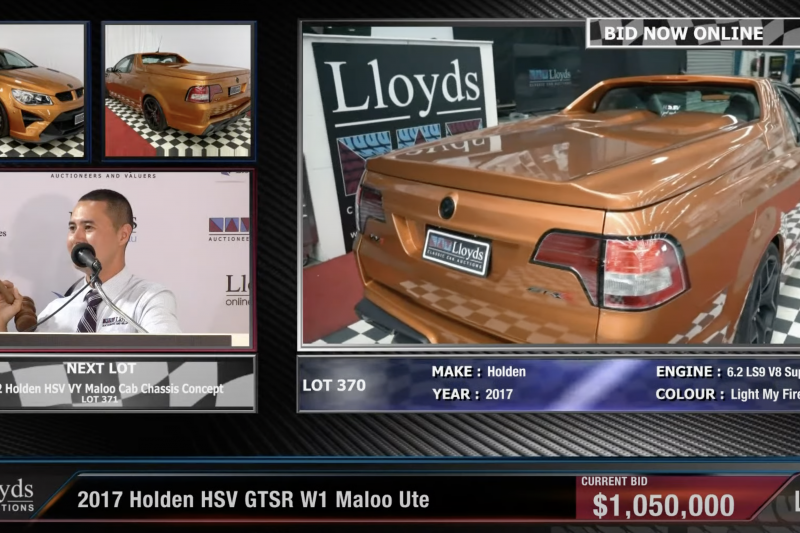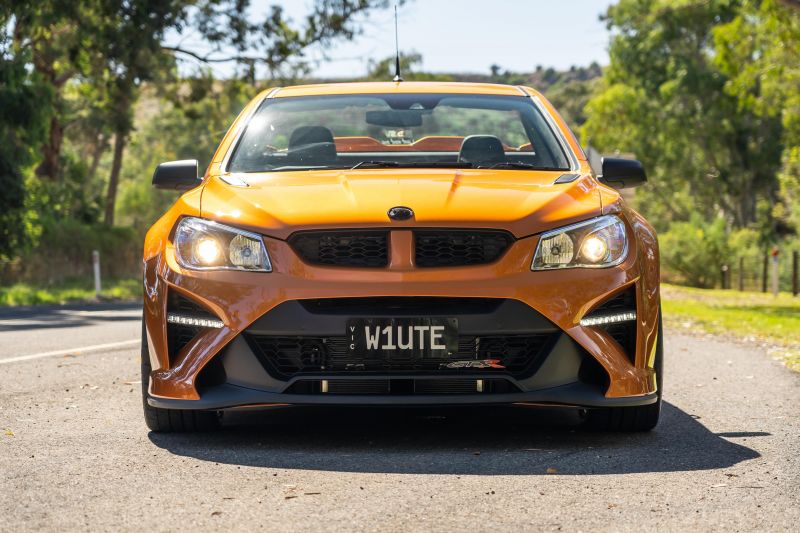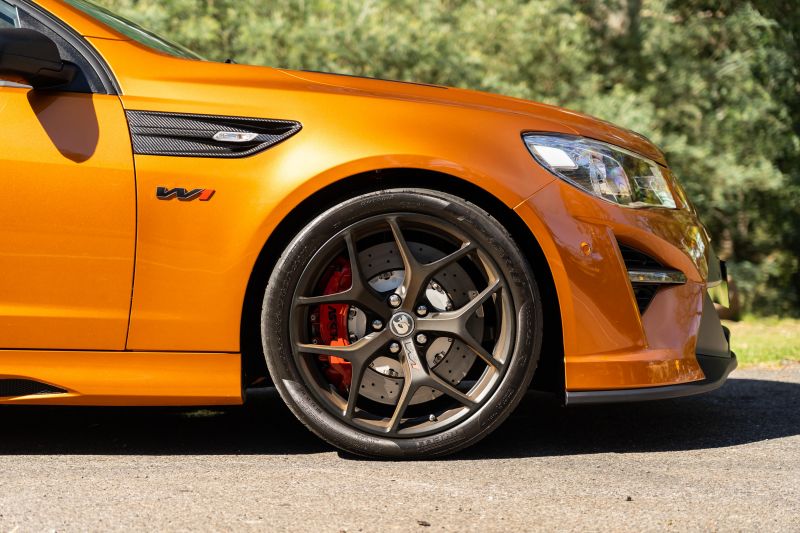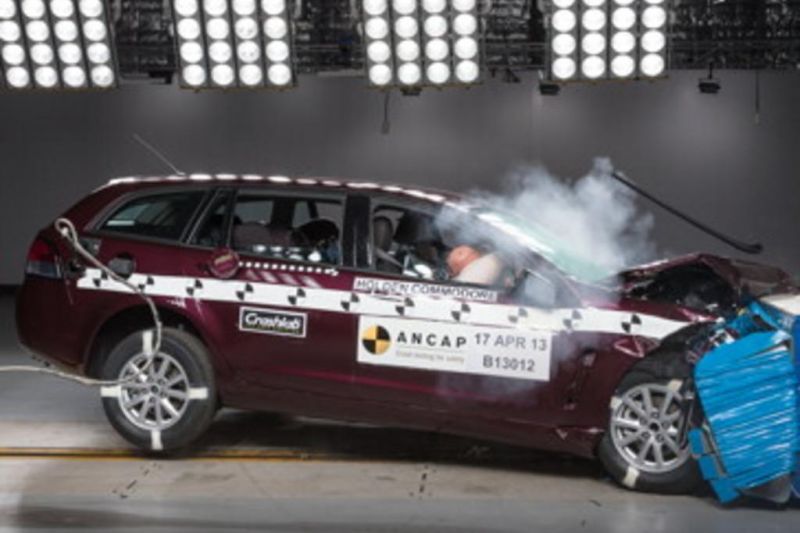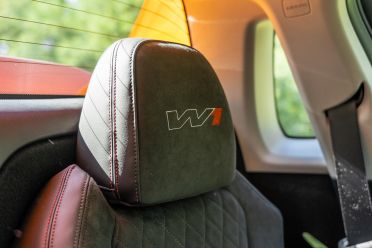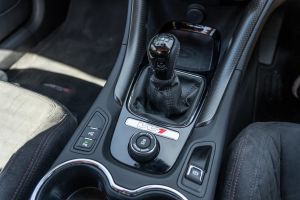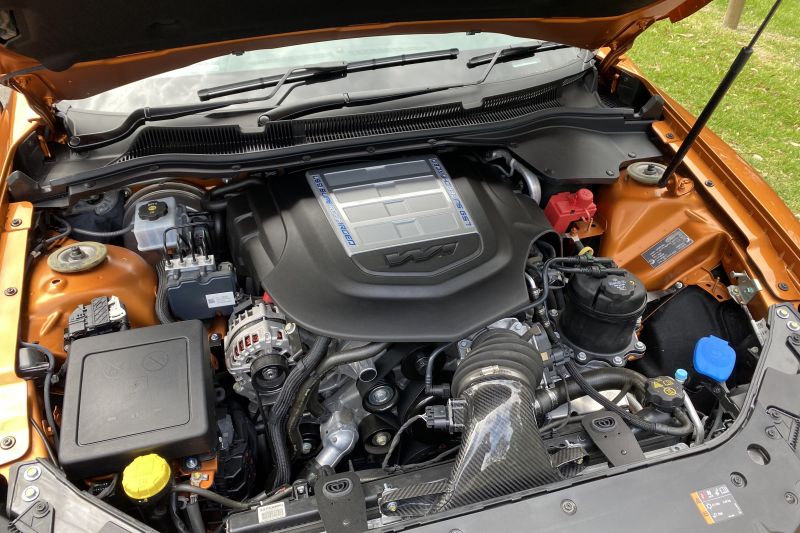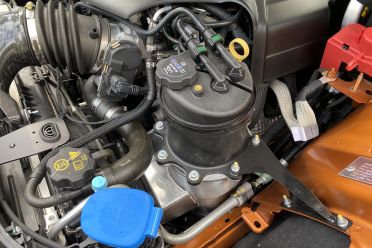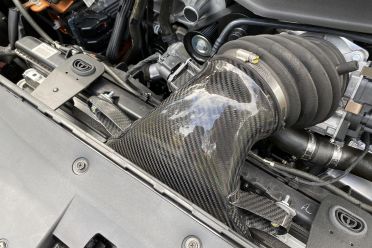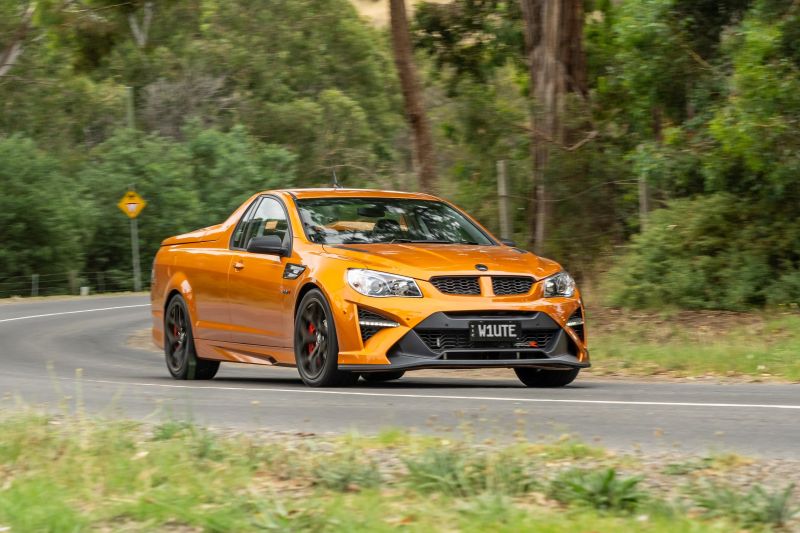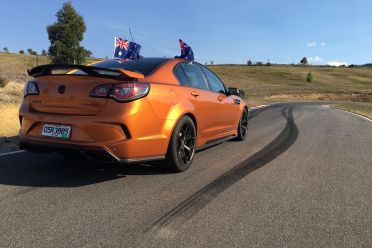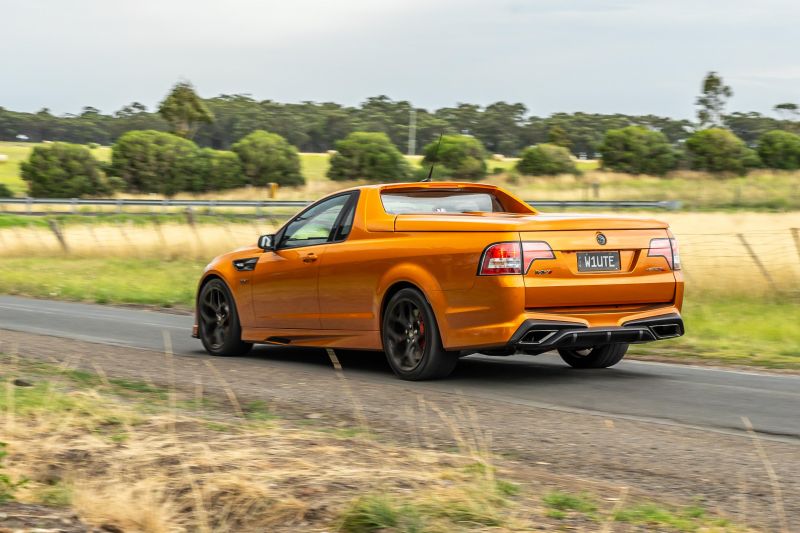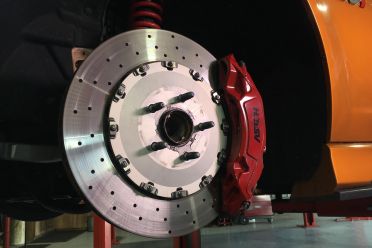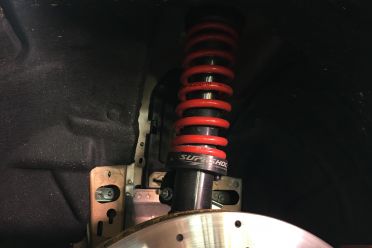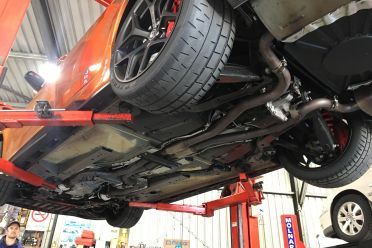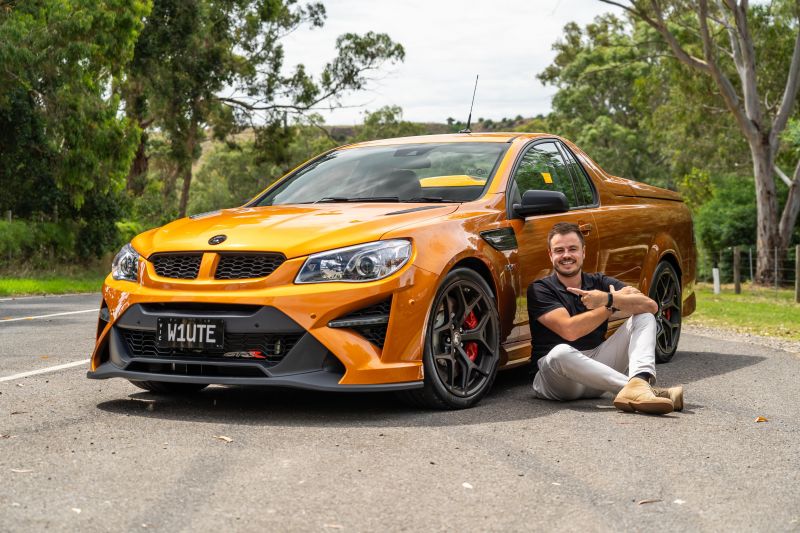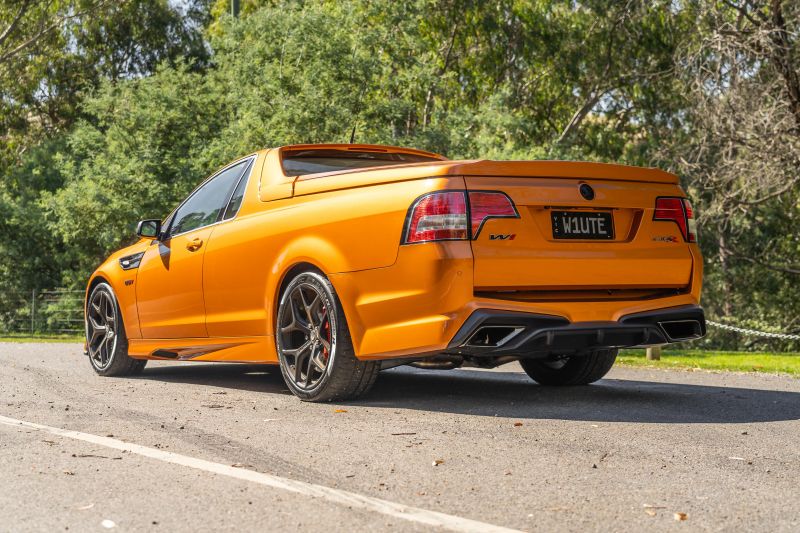I’ll be the first to admit I’m a huge fan of Australian cars. While the rest of the world was moving to SUVs and smaller engines, Australia kept building cars the teenage version of me would ogle in car magazines.
Sure, it was ultimately part of the reason Australian manufacturing ended, but it also meant right up until as late as 2017 we were producing modern muscle cars that made a stack of sound and put big smiles on our faces.
In recent times more talk and hype around electric cars has also meant these muscle cars have increased in value… so much so the car you’re looking at here briefly held the record for the most money paid for an Australian production car, ever.
The hammer dropped on this 2017 HSV GTSR W1 Maloo ute at $1,050,000 (plus a 7.5 per cent auction premium), making it the most expensive Australian car sale at the time. It was pipped weeks later when a 1971 Ford XY Falcon GT-HO sold at auction for $1,150,000 (plus a 5.5 per cent auction fee).
As we exclusively reported at the time, the GTSR W1 Maloo ute was won by LMCT+, a Melbourne-based company that specialises in car giveaways. It will also be raffling this vehicle in the coming weeks (see more details on its website).
We wanted to have one final drive of this iconic Australian car before it finds its way into the hands of a lucky winner.
How much does the HSV GTSR W1 Maloo ute cost?
Here’s the story behind this rare ute. Only four were officially built and sanctioned by HSV. They were offered to the company’s most loyal customers and directors of the company.
An additional two were built after the first four, but it’s our understanding they weren’t sanctioned by HSV.
While HSV built all 295 GTSR W1 sedans (275 for Australia and 20 for New Zealand, plus three production pilots), the four W1 Maloo utes were engineered and built by Walkinshaw Performance.
It’s understood HSV couldn’t build a sufficient business case to make a full W1 Maloo ute production run, so it allowed Walkinshaw Performance to build these four for selected customers.
As a result, they paid an undisclosed sum for the build to cover the cost of engineering certification and exclusivity. It’s also the reason these vehicles carry a build plate that lists them as featuring an LSA engine.
The four official build colours were Light My Fire (the orange seen here), Yellah (similar to the 1996 HSV VS GTSR), a matte grey and Sting (a deep red colour). The other two non-official vehicles were Heron White and Spitfire (green).
The final cost paid by the winner of the HSV GTSR W1 Maloo ute auction was $1,223,290.70 (inclusive of GST, buyer’s premium, and stamp duty).
What do you get?
The four HSV GTSR W1 Maloo utes had the same mechanical and visual changes as the W1 sedans, the only exceptions being a longer, lower side skirt due to the ute’s longer wheelbase.
Outside of that, they received the same suspension, engine, interior and brake upgrades.
They sit on 20-inch alloy wheels wrapped in Pirelli PZero Trofeo R tyres (the only vehicle in the world to come standard with them at the time), polypropylene side skirts that are 12mm wider than a regular GTS, Supashock fixed-rate dampers, and six-piston AP racing brake calipers with floating 410mm two-piece rotors up front.
Inside you’ll find Alcantara trim on the steering wheel, gear shifter, seats and dashboard, as well as an 8.0-inch MyLink infotainment system with inbuilt satellite navigation, a six-speed manual transmission (no auto was offered), dual-zone climate control and manual seat adjustment.
There were six colour options available at the time and they were all free of charge.
Is the HSV GTSR W1 Maloo ute safe?
While the W1 variant was never crash tested, ANCAP did crash test the Holden Commodore wagon and sedan, with the crash rating carrying over to the HSV Maloo.
It scored a five-star ANCAP crash rating when tested in 2013 and achieved a total score of 34.06 out of 37.
Standard safety features included front and side airbags, forward collision warning, lane departure warning, blind-spot monitoring, and rear cross-traffic alert.
You can read more about the crash test results on the ANCAP website.
What is the HSV GTSR W1 Maloo ute like on the inside?
Closer to the end of its tenure, the VF Commodore was starting to show its age. It may not look modern today, but the interior felt fresh when the car was launched.
HSV aimed to further enhance the interior with sportier seats and extra bolstering, Alcantara trim on the steering wheel, seats, gear shifter and parts of the dashboard, as well as unique a HSV and W1 insignia on other parts of the cabin such as the head rests and a panel beneath the gear shifter.
As a ute it’s also pretty practical with storage netting and space behind the seats to store small bags. Despite visibility being very poor from the driver’s seat (thanks to the hard ute cover taking up most of the visible space out the rear window), it came with front and rear parking sensors, along with a reversing camera to make life a little easier.
There’s even a semi-autonomous parking feature that would steer the vehicle into a parallel or perpendicular park hands-free.
Central to the cabin is a high-mounted 8.0-inch infotainment system featuring MyLink. It features inbuilt satellite navigation, embedded apps (such as Stitcher and the now-defunct Pandora) and the ability to forward voice recognition commands through to the smartphone cloud-based interface.
Fit and finish inside the cabin is generally pretty good, with the only area of concern being the Alcantara panel along the dashboard, which had a habit of coming loose on occasion.
When it came to load hauling and towing, the GTSR Maloo was rated with a braked towing capacity of 1600kg and a payload of around 500kg. It’s unclear whether that towing capacity and payload carried over to the W1 Maloo.
What’s under the bonnet?
Holden managed to convince General Motors (GM) to restart production of the LS9 V8 engine to accommodate the W1 build program. It managed to get GM to produce 300 LS9 engines to cover the production run, plus a handful of spares to accommodate damaged or crashed vehicles.
The numbers don’t quite add up, with 275 W1 sedans built for Australia, 20 destined for the US, four utes, and three pilot vehicles. That makes for more than 300, and that’s before you include the non-official W1 Maloo utes that were built.
There’s a chance some of these vehicles used LS9 engines sourced from another location outside of the 300-strong Holden run.
The LS9 was last used in the C6 Corvette ZR1 and is a 6.2-litre supercharged V8 producing 474kW of power and 815Nm of torque. It’s mated exclusively to a six-speed manual Tremec TR6060 close-ratio gearbox.
Official fuel economy came in at 16.5 litres per 100km, but during our short time with the car we averaged around 24.5L/100km. It requires 95RON premium unleaded as a minimum.
The LS9 ended up being a nice fit under the bonnet because it’s based on the LS3. Unlike the LS3 it features a dry sump that allows the engine to sit lower in the engine bay, which helps reduce the centre of gravity.
A dry sump allows vehicles that frequent race tracks (where high cornering g-forces are experienced) to limit oil flow issues, which in turn reduces the risk of overheating engine components.
Unlike a regular engine, the oil pan in a dry sump vehicle is small, with the oil immediately pumped into a reservoir mounted adjacent to the engine. This oil can then be scavenged easier and fed back into the engine for lubrication.
How does the HSV GTSR W1 Maloo ute drive?
This isn’t my first experience with a mighty HSV GTSR W1. Back at the old place, I had the chance to test the W1 sedan over three days. During that time we hit the race track, drag raced an BMW M3 Competition, Alfa Romeo Giulia QV and a Mercedes-AMG C63 S on an airport runway.
It was an epic experience and it left me on the hunt for a W1 to add to my collection. I passed up two vehicles (with the benefit of hindsight I now know were very well priced) and today I’m left watching with envy as more people get their hands on them. Recent sale prices have seen this being sold for upwards of $350,000, it’s crazy money.
So when the opportunity came up to drive the W1 Maloo ute, I jumped at the chance. The noise will be familiar to W1 owners. It has a loud idle and there’s absolutely no mistaking this for anything other than a fire-breathing supercharged V8.
At low speeds the noises are mechanical and it feels and sounds more like a race car than it does a road car. The clutch is surprisingly light to use and you’ll notice before long that first gear is almost all that you need for low-speed driving.
The gear ratios see first rev out to almost 100km/h, while peak power hits at 6500rpm and peak torque at 3900rpm. It’s an engine that loves to rev, and the more you pile on the better it sounds.
When you’re not hearing exhaust noise, you’ll experience a howling whine from the supercharger. It’s very noticeable in the cabin and it adds to the drama and experience you feel at the helm of this beast.
On the open road this car piles on speed unlike anything else I’ve experienced recently. In-gear acceleration is otherworldly and most of that comes down to the suspension and tyre setup.
The Pirelli P-Zero Trofeo R semi-slick tyres provide the ultimate amount of traction and make getting hard on the throttle an easy task. Unless you’re overtly aggressive mid-corner or off the line, they hook up nicely and complement the chassis well.
On the suspension front, Supashock tuned a fixed rate upside-down monotube strut at the front with an internal rebound spring with a damper and conical spring at the rear. Yes, it’s firm, very firm – especially in and around the city.
It frees up a little on the open road, but it doesn’t feel anywhere near as comfortable for daily driving as HSV’s Magnetic Ride Control (MRC) cars. But that’s okay, given what we’re playing with here.
The suspension setup results in tramlining on some roads – that’s the effect you get when you constantly need to fight the steering as it tries to fall into any divots on the road surface. It’s not a huge issue, but it means you constantly need to be in control of where the car’s going, otherwise it can be dragged around.
There’s next to no body roll through corners and if you found yourself at a smooth race track, like we did when we tested the W1 sedan, you’d find that this feels like a big, fast go kart. It sticks to the road incredibly well and despite its size, it feels easy to drive.
The brakes are also excellent. They consist of a 410mm cross-drilled floating rotor at the front with six-piston calipers, while the rear is serviced by a 372mm set at the rear with four-piston calipers.
Brake pedal feel is excellent and there’s rarely a time you’ll find fade or any reluctance to stop. Hard stops can sometimes feel abrupt due to the added grip on offer from the tyres, but for the most part the brakes are up to the task.
While HSV didn’t provide an official 0-100km/h time, we managed to achieve a 0-100km/h time of 4.1 seconds when we tested the W1 sedan.
That required the tyres to be warm, a launch from around 3000-4000rpm and a clean shift from first to second. First gear taps out just shy of 100km/h, so that figure would be sub-four seconds if a first-to-second shift didn’t need to happen.
Jumping into the GTSR W1 Maloo ute and expecting it to drive like a Ferrari would be the wrong thing to do. So when I wax lyrical about how good this is to drive, it’s in the context of it being an Australian-built muscle car. When you look at it in that context, you understand just how much of an achievement it really is.
CarExpert’s take on the HSV GTSR W1 Maloo ute
Some days in the office are better than others. This was definitely one of those.
While some people will look at this vehicle and scoff at the cost, to me it’s one of the most special cars to set tyres on Australian tarmac. It represents the high watermark of the Australian car industry and makes me proud of what Australian engineers achieved on small budgets.
A car like this and the others that are now selling for incredibly high prices are worth what people are willing to pay for them. The fact that this vehicle sold for over $1 million is testament to the demand for these vehicles.
If in 15 years time we’re all driving around in electric cars that make no noise, we’ll savour iconic cars like this.
I also personally think it’s awesome that this car was won by the guys at LMCT+. It means that instead of sitting in someone’s garage never being driven, it will be won by a person that will (hopefully) drive it and enjoy it. Cars like this aren’t designed to be locked away forever.
And yes, before you ask, I’ll be buying a ticket. This would be the ultimate machine to add to a collection of Australian cars! You can head to the LMCT+ website for more details on the draw.
We have no affiliation with LMCT+, we get no benefit from any ticket sales and have no influence on the outcome.
We are very grateful though for the company trusting us with its new purchase to produce this piece of content.
Click the images for the full gallery
MORE: $1million HSV GTSR W1 Maloo ute to become a raffle prize

